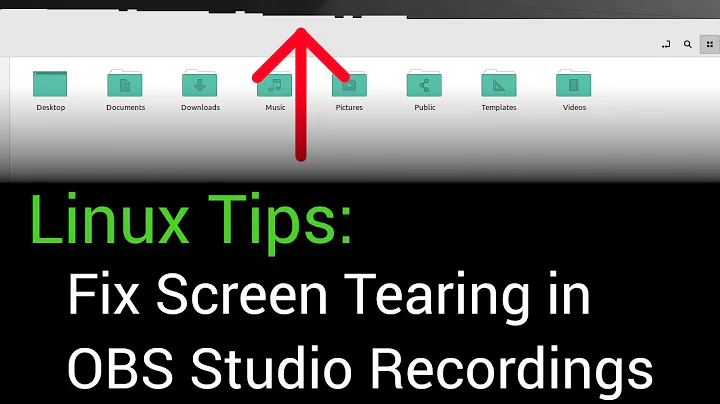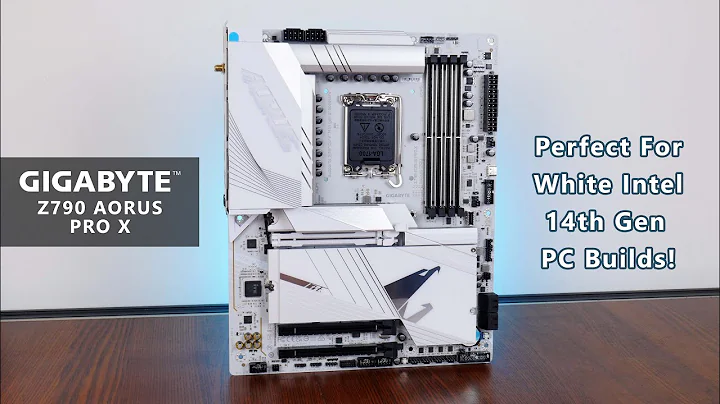Revolutionizing Frontera: SHARP & Adaptive Routing
Table of Contents
- 🌟 Introduction
- 🛠 Understanding Frontera
- 🌊 General Compute Nodes
- 💾 NV DIMM Nodes
- 🎮 GPU Nodes
- 🔄 Network Infrastructure
- 🌐 InfiniBand HDR
- 🔄 Switch Configuration
- 🛠 Adaptive Routing
- 📊 testing and Challenges
- ✅ Performance Impact
- 🛠 Scalable Hierarchical Aggregation Reduction Protocol (SHARP)
- 📈 Implementation Challenges
- 📉 Performance Analysis
- 📊 Benchmarking Results
- 📈 OSU All Reduce
- 🚧 OSU Barrier
- 🔍 Performance Variability
- 🔄 Investigation and Tuning
- 🔧 Future Directions
- 🚀 Enabling AR and SHARP
- 📝 Collaboration with Mellanox
- 💬 Q&A
- ❓ Issues with Adaptive Routing
- ❓ Support for Broadcast and Reviews
- ❓ Debugging at Large Scales
Introduction 🌟
In the dynamic realm of High-Performance Computing (HPC), optimizing application performance is paramount. This article delves into the intricacies of Frontera, a cutting-edge HPC system, and explores the profound impact of two key technologies: Adaptive Routing (AR) and Scalable Hierarchical Aggregation Reduction Protocol (SHARP).
Understanding Frontera 🛠
Frontera boasts a formidable infrastructure comprising various node types. The backbone consists of General Compute Nodes, NV DIMM Nodes leveraging Intel's persistent memory technology, and GPU Nodes equipped with NVIDIA Quadro 5000 RTX cards.
General Compute Nodes 🌊
These nodes, powered by 8008 Cascade Lake processors, serve as the workhorses of Frontera, facilitating a wide array of computational tasks.
NV DIMM Nodes 💾
Configured to support large memory users, these nodes harness Intel's NV DIMM technology, augmenting Frontera's memory capabilities.
GPU Nodes 🎮
Featuring NVIDIA Quadro 5000 RTX cards, these nodes excel in machine learning and molecular dynamics simulations, offering specialized compute resources.
Network Infrastructure 🔄
Frontera's network backbone revolves around InfiniBand HDR technology, boasting robust connectivity and bandwidth. Switches operate at full HDR capacity, with a hierarchical topology ensuring efficient data transmission.
InfiniBand HDR 🌐
The network infrastructure is bolstered by InfiniBand HDR technology, providing high-speed interconnects crucial for seamless communication among nodes.
Switch Configuration 🔄
Switches are configured in a hierarchical fashion, optimizing data traffic flow and minimizing congestion. Each rack is equipped with top-of-rack switches, ensuring efficient data exchange within the system.
Adaptive Routing 🛠
AR holds the promise of enhancing network performance by dynamically balancing traffic and facilitating seamless message recovery. However, its implementation journey on Frontera has been riddled with challenges.
Testing and Challenges 📊
Despite its potential benefits, enabling AR posed significant hurdles. Configuration mismatches, driver inconsistencies, and compatibility issues plagued the implementation process, leading to prolonged testing phases.
Performance Impact ✅
Initial tests showcased promising results, with micro-benchmarks indicating notable performance enhancements. However, the journey was marred by intermittent performance degradation, necessitating meticulous troubleshooting and eventual deactivation.
Scalable Hierarchical Aggregation Reduction Protocol (SHARP) 🛠
SHARP represents a paradigm shift in collective communication, aiming to offload aggregation tasks and alleviate processing burdens. However, its integration into Frontera's ecosystem presented its own set of challenges.
Implementation Challenges 📈
Configuring SHARP demanded meticulous attention to detail, requiring specific library versions and firmware updates. Despite initial setbacks, collaborative efforts with Mellanox paved the way for successful deployment.
Performance Analysis 📉
Benchmarking endeavors shed light on SHARP's efficacy, showcasing significant performance improvements, particularly in scenarios involving small message sizes. However, performance variability and tuning complexities underscore the need for further optimization.
Benchmarking Results 📊
Comprehensive benchmarking exercises provided invaluable insights into the performance landscape of Frontera, offering a glimpse into the tangible benefits of AR and SHARP.
OSU All Reduce 📈
Results from OSU All Reduce benchmarks underscored the potential of AR and SHARP in enhancing collective communication, with notable speedups observed across various node configurations.
OSU Barrier 🚧
Similarly, OSU Barrier benchmarks highlighted the efficiency of AR and SHARP in reducing synchronization overhead, particularly in scenarios characterized by high concurrency.
Performance Variability 🔍
Despite the promising results, performance variability emerged as a recurring theme, necessitating deeper investigation and fine-tuning to unlock the full potential of AR and SHARP.
Investigation and Tuning 🔧
Collaborative efforts with Mellanox and internal debugging endeavors are underway to address performance variability and optimize the configuration parameters governing AR and SHARP.
Future Directions 🔧
As Frontera continues its Quest for unparalleled performance, several avenues for future exploration emerge, ranging from enabling AR and SHARP by default to fostering collaboration with technology partners.
Enabling AR and SHARP 🚀
Pending resolution of performance issues, plans are underway to enable AR and SHARP by default, ushering in a new era of enhanced performance and efficiency for Frontera users.
Collaboration with Mellanox 📝
Continued collaboration with Mellanox promises to unravel the full potential of AR and SHARP, paving the way for optimized collective communication and accelerated scientific discovery.
Q&A 💬
Issues with Adaptive Routing ❓
Q: Do performance issues with adaptive routing only manifest when running certain applications?
A: The performance issues with adaptive routing were initially elusive, affecting various applications without discernible Patterns. Collaborative efforts with Mellanox revealed underlying issues, leading to intermittent performance degradation across the system.
Support for Broadcast and Reviews ❓
Q: Will Frontera support broadcast and reviews in the near future?
A: Support for broadcast and reviews is currently in development, with implementation Slated for the near future. This enhancement will further enrich Frontera's communication capabilities, facilitating seamless data exchange and collaboration among users.
Debugging at Large Scales ❓
Q: How do you approach debugging issues at large scales on Frontera?
A: Debugging issues at large scales on Frontera necessitates a collaborative approach, with users and administrators working HAND-in-hand to diagnose and resolve issues. Real-time monitoring, proactive communication, and targeted debugging strategies are instrumental in ensuring optimal system performance and user satisfaction.
Conclusion 🌟
In conclusion, Frontera's journey towards optimizing application performance through AR and SHARP exemplifies the collaborative spirit and relentless pursuit of innovation within the HPC community. As challenges are surmounted and solutions refined, Frontera stands poised to usher in a new era of scientific discovery and technological advancement.
 WHY YOU SHOULD CHOOSE TOOLIFY
WHY YOU SHOULD CHOOSE TOOLIFY

























